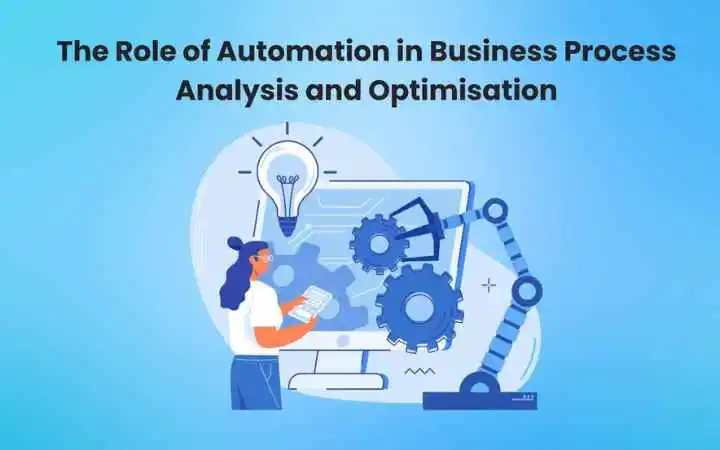The Role of Automation in Business Process Analysis and Optimisation

The success of modern businesses is heavily dependent on streamlining operations and maximising efficiency. The concepts of Business Analysis and Business Process Analysis (BPA) are in the forefront of this groundbreaking endeavour. These essential components allow for optimum efficiency by understanding the nuances of organisational processes. In today’s technologically advanced world, the integration of automation with these analytical tools has been a game-changer for business operations and success.
In this blog, we will delve into the possibilities of automation and how it is transforming the core framework of organisational efficiency. Improving decision-making, guaranteeing scalability, and finding the ideal balance between humans and machines are all topics covered in this blog.
The Genesis of Business Analysis
The field of business analysis is diverse and leads the way in understanding the workings of an organisation. It entails assessing procedures, seeing areas for development, and developing plans to boost productivity. Simply put, business analysis is the practice of analysing an organisation’s environment to uncover insights that will help the company grow. This analytical ability goes beyond only examining financial facts; it also explores the organisation’s structure, culture, and day-to-day operations.
The Rise of Business Process Analysis
Presenting BPA, the sophisticated counterpart of business analysis. In contrast to its more general predecessor, BPA focuses on the processes and procedures essential to an organisation’s survival. It examines how work is done, how information moves, and where any bottlenecks could be hidden. BPA offers a detailed grasp of an organisation’s operating procedures in this way. It exposes the inefficiencies that could be concealed and waiting to be found and fixed.
The Interplay of Automation and Business Process Analysis
The paradigm shifts as firms navigate the digital world by combining automation and BPA. In this application, automation refers to using technology to carry out repetitive operations with the least human involvement. Automation works best when combined with BPA to turn insights into action. Routine and mundane chores that formerly required precious man-hours may now be completed quickly and precisely by automated technologies.
Streamlining Operations with Automation
Automated BPA makes it easier to find and fix bottlenecks. For example, automation completes typical data input or information validation activities more smoothly, even if they may be time-consuming and error-prone. As a result, human resources are free to concentrate on more complex facets of business analysis, such as decision-making, strategic planning, and innovation development. The tangible increases in efficiency result in a structure for the organisation that is smaller and more flexible.
Elevating Decision-Making through Automated Analysis
Automation’s remarkable addition to BPA is its speed and accuracy in processing large datasets. Businesses constantly collect massive amounts of data and extracting valuable insights from this flood requires computational skills. These data mountains are sorted through automated analysis, which extracts pertinent information and presents it in an understandable manner. This improves the accuracy and applicability of conclusions while also speeding up the decision-making process.
Scalability and Adaptability
Scalability and adaptability are not just trendy terms in contemporary business but are essential for existence. BPA automation provides a scalable system that easily changes to meet an organisation’s changing demands. Automated systems easily adapt to changing company needs and circumstances, guaranteeing that analytical processes stay solid and efficient.
The Human Touch in Automated Analysis
Automation is revolutionising efficiency, but nothing can replace the human touch. Human cognition is powerful in strategic decision-making, innovative problem-solving, and comprehending the subtleties of complex human relationships. A potent synergy is produced when human intuition and machine analysis are combined. Routine tasks are handled by automation, freeing up human resources to focus on tasks that call for creativity, emotional intelligence, and a deep comprehension of business dynamics.
Navigating Challenges
As with any transformational endeavour, incorporating automation in BPA is challenging. Careful attention must be given to the initial investment in technology, the need to upskill the workers, and the worries around job displacement. Nevertheless, companies that can overcome these obstacles will soon enter a new phase in which creativity and efficiency coexist.
In Conclusion
Automation combined with the development of business analysis and BPA creates a future picture of firms operating with never-before-seen accuracy and vision. This dynamic interaction simplifies processes and puts organisations in a strong position to respond quickly and adapt to changing market conditions. The combination of human intelligence and technical capability will lead organisations towards a seamless future as we enter the age of automated insights.






